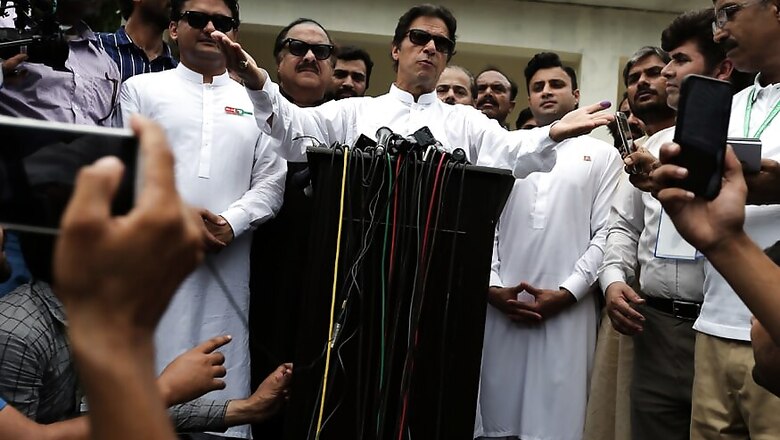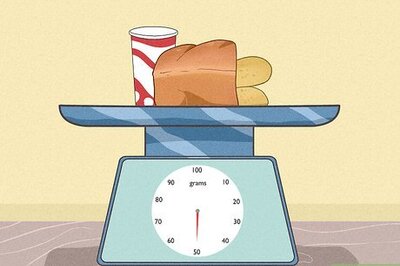
views
With Pakistan Tehreek-e-Insaf (PTI) all set to form the government in Pakistan after a violence-riddled election, cricketer-turned-politician Imran Khan is on the verge of becoming the nation’s 19th elected prime minister with the support of coalition partners. None of the 18 before him have managed to complete a full five-year term. For the PM-elect to be able to steady the ship, economic stability in the country is a must.
According to a Bloomberg report, the consensus opinion is that Khan has the powerful Pakistan army’s support. Assuming that is true — and remains so for some time — there’s a window of opportunity for him to stabilize the economy.
The report states that the immediate priority for the new government has to be to correct the imbalances. A full-year current account deficit of 5.7 percent of GDP isn’t exactly a shallow hole and there’s no guarantee that an 18 percent drop in the rupee in the past year will do much to fill it.
“Never has Pakistan borrowed so much money. Never has the rupee fallen so low against the dollar. We have to fix the economy. Our target is the Pakistani overseas. We will invite them to come and invest here,” said Imran Khan in his address to the nation after the elections.
For instance, a devalued currency ought to boost Pakistani textile exports, which did grow 9 percent in the fiscal year that ended June 30. However, because of water shortages and flagging crop yields, cotton prices in Pakistan are also rising, crimping exporters’ competitive advantage. Primary yarn margins this week were half of their average during the last fiscal year, BIPL Securities Ltd notes.
According to the report, the Pakistani rupee's near 18 percent slump puts it among the 11 worst-performing currencies that have slumped 10 percent or more over the past year.
A temporary fix would be to increase imports of raw cotton, although any tax or duty breaks would perhaps have to be balanced fiscally by raising hard-currency funds via a global bond issue or an IMF bailout.
In between managing Beijing, New Delhi, Washington and the army headquarters in Rawalpindi, Khan will have to prepare the economy for liftoff. After all, if he does prevent the China-backed corridor from becoming a debt millstone, Pakistan could in a few years be reaping the benefits of faster connectivity from transport projects such as the Karachi-Lahore-Peshawar railway.
The PM-elect has also expressed his interest in emulating China’s growth model.
Capital Economics forecasts GDP growth at 3% in the next two years, down from 5.8% in 2018.
Oil prices, which have pushed higher since the start of the year, are also weighing on Pakistan’s trade and current account deficits. Brent crude for September delivery LCOU8, +0.18 percent last settled at USD 72.87. The global benchmark is up more than 9% in the year to date and more than 50 percent over the last 12 months.
Many emerging markets, such as Turkey and Argentina, have raised their borrowing rates in the face of this issue. Pakistan belongs into that group too. With an estimates USD 75 billion of external debt, mostly in US dollars, strength in the greenback is a real problem because it makes Pakistan’s debt more expensive.
The front-runners for the elections were Shehbaz Sharif, the brother for former Prime Minister Nawaz Sharif, of the incumbent Pakistan Muslim League, and former cricketer Imran Khan.
“I pledge that we won’t be like those politicians who have used tax payers’ money for their personal use. We have the world's youngest population. If we don't get the investment, where will we get them the jobs?” asked Khan.




















Comments
0 comment